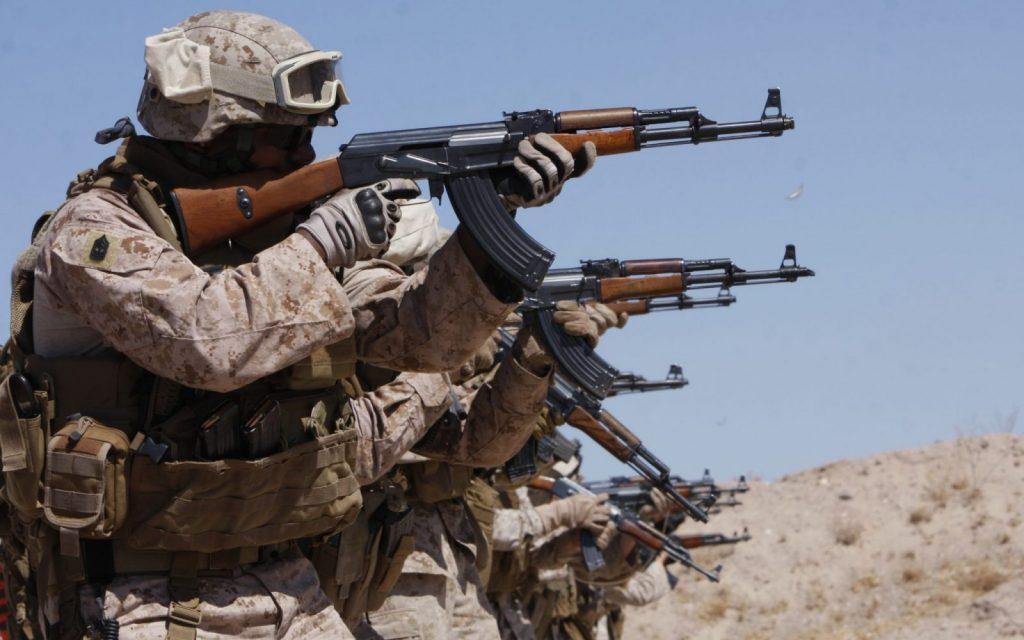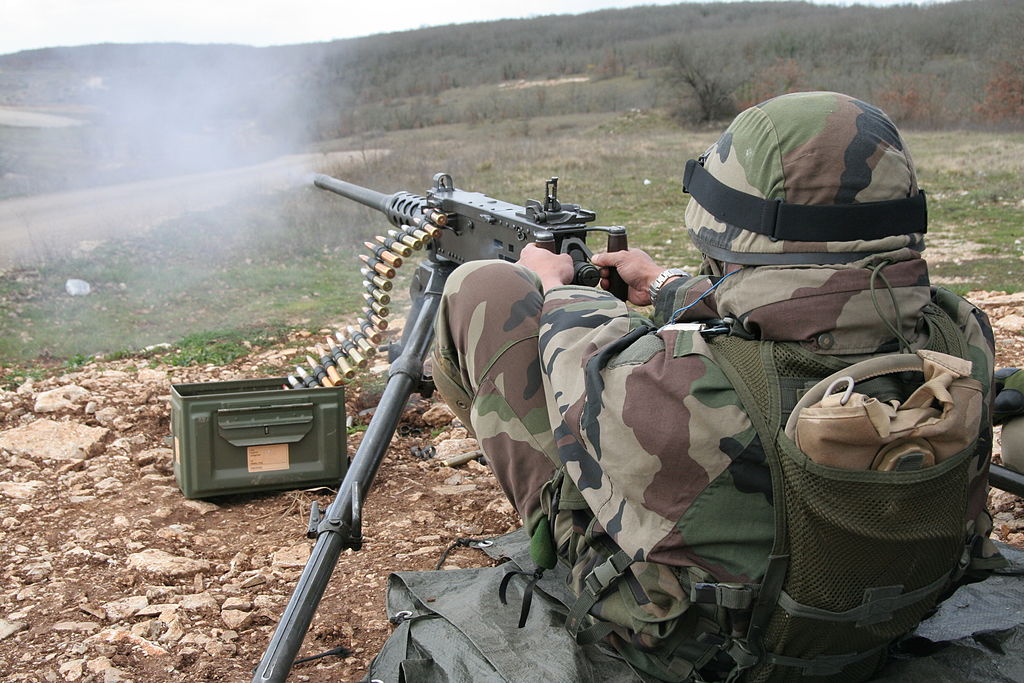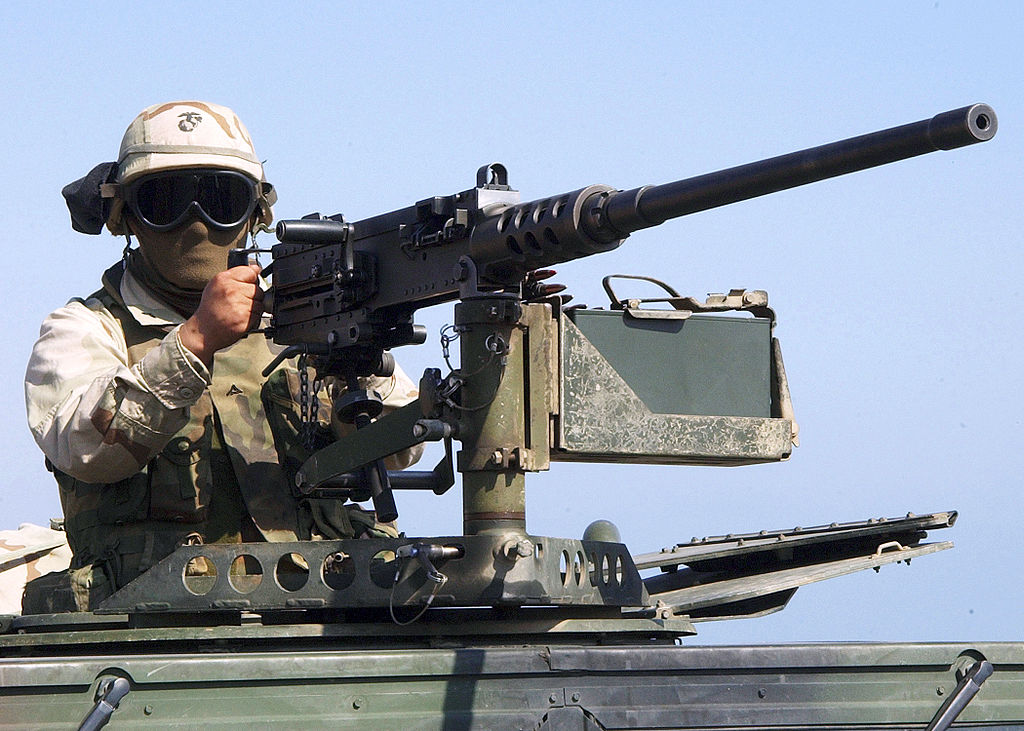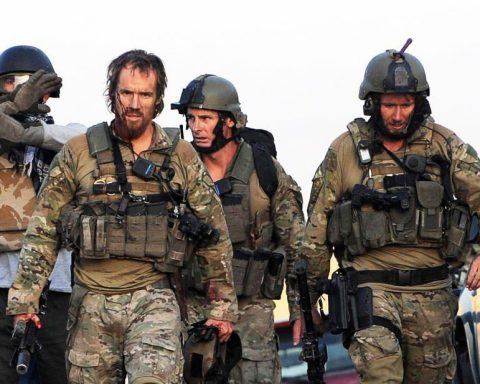In warfare, introducing new weapons can lead to significant changes on the battlefield and even confer an overwhelming advantage to one side, thereby leading to victory. Consequently, military technology continually advances as experts seek to identify the latest and greatest weapon. However, amidst this dynamic landscape, certain weapons stand out as exceptional, having endured the test of time, outlasted competition, and repeatedly demonstrated their efficacy on the battlefield. In this article, we will highlight five such weapons that hold a special place in military history.
British Land Pattern Musket
Initially introduced in 1722, the British Land Pattern musket was a flint-lock, muzzle-loading, smoothbore firearm. Its derivatives would become the standard infantry weapon for the British Empire, remaining in use for more than a century. The soldiers who carried this weapon affectionately referred to it as the Brown Bess, which saw action in numerous theaters worldwide. In some notable conflicts, such as the American Revolution and the Texas Revolution, both sides employed the Brown Bess. Eventually, in 1838, the Brown Bess retired from service in the British military, giving way to a newer percussion cap musket.
3-line rifle M1891
The M1891, commonly referred to as the Mosin-Nagant rifle, was a staple weapon in the arsenal of the Russian Empire and, later, the Soviet Union. With production figures exceeding 37 million units, it is one of the most produced rifles in history. The M1891 first saw combat action in the Russo-Japanese War of 1904-1905, after which it became the primary infantry rifle for the Russian forces during World War I. Its improved version, the M1891/30, went on to serve as the primary infantry rifle for the Soviets in World War II. After nearly six decades of service, the Mosin-Nagant was eventually phased out following World War II, as the AK-47 and SKS became widely available.

Lee-Enfield
The Lee-Enfield pattern rifles, first introduced in 1895, served as the primary firearm for British and Commonwealth forces for over six decades before officially retiring in 1957. These rifles saw widespread use across the globe, arming troops in conflicts such as the Boer Wars in South Africa, both World Wars, and in some United Nations forces during the Korean War. Notably, a sniper variant of the rifle was rechambered in the 1950s to accommodate the 7.62 NATO round and designated the L42A1.
This rifle continued to see service until 1993, almost a century after the first Lee-Enfield rifle was fielded. The Lee-Enfield pattern rifles were highly regarded for their reliability, accuracy, and ruggedness, making them popular among soldiers for several decades. The L42A1 variant, in particular, was highly prized by snipers and remained in use for an extended period.
Springfield M1903
The Springfield Model 1903 rifle was developed as a response to the subpar performance of the Krag-Jorgensen rifle, which the US Army used during the Spanish-American War. Introduced as the primary infantry rifle of the US military in 1903, the Springfield utilized a similar design to its predecessors, featuring a bolt-action mechanism and a five-round internal magazine. The rifle served as the primary weapon of US forces during World War I and continued to be used alongside the newly introduced M1 Garand during World War II.
Additionally, the M1903A4 variant was utilized as a sniper rifle and served in this role throughout the Korean War and into the early stages of the Vietnam War. The rifle’s longevity is a testament to its reliability and effectiveness, as evidenced by the fact that the US Army printed the last user manual for the Springfield Model 1903 in 1970, nearly 70 years after it entered active service. The Springfield Model 1903 is an iconic rifle, having played a critical role in some of the most significant conflicts in modern history.
Browning M2 Machine Gun
The Browning M2 .50 caliber machine gun affectionately referred to as “Ma-Deuce,” has been utilized in various capacities across the globe for nearly a century. The design process for the M2 began towards the end of World War I in response to General John J. Pershing’s call for a more powerful machine gun. John Browning developed the M2 by scaling up his successful M1917 machine gun to accept a new .50 caliber round developed by Winchester Repeating Arms Company.

The M2 was first approved in 1921, and its unique design allowed the receiver to be transformed into seven different configurations. The machine gun has served in various roles, from infantry to aircraft. The M2’s remarkable reliability is evident by the fact that, in 2015, an M2 arrived at the Anniston Army Depot for an overhaul after 94 years of continuous service. With nearly 100 years of service and ongoing modifications, the M2 will undoubtedly continue to be a vital component of infantry weaponry for years to come.





